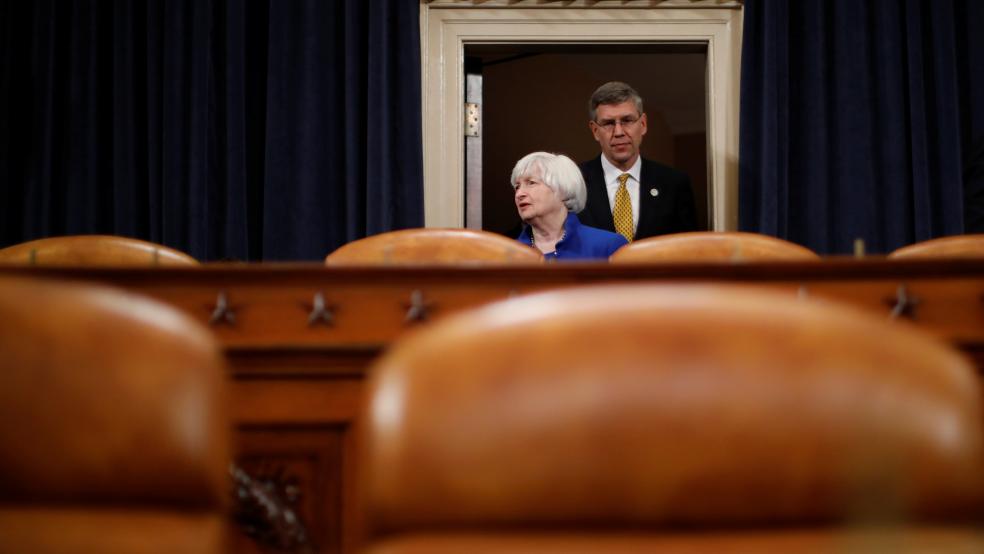Just a few days after Federal Reserve Board Chair Janet Yellen delivered a speech explaining why she felt it would be appropriate for the Fed to finally fire up the interest rate machine later this year, raising its benchmark federal funds rate from the near-zero level where it has sat for nearly seven full years, the Labor Department delivered a report that threw sand in the gears.
In September, according to the preliminary report, the U.S. economy added only 142,000 jobs, a figure far below the consensus estimate of 200,000 ahead of the report. Worse, the Bureau of Labor Statistics lowered previous estimates for August and July, suggesting that the economy is not as strong as statistics made it look during the third quarter of the year.
Related: Can the GOP Bypass Its Right Wing to Revive the Export-Import Bank?
“While it’s always important not to over-react to one single data release, we’ll make an exception in this case,” wrote Paul Ashworth, chief U.S. economist with Capital Economics. “The chances of a rate hike by the Fed this year just went way down.”
Calling the report “disappointing,” PNC Senior economist Gus Faucher agreed that it all but takes a rate hike off the table for the remainder of the year.
“This likely rules out an increase in the fed funds rate when the FOMC next meets in late October, and a mid-December rate increase now looks less likely,” he said. “Financial markets are now pricing in the first increase in the funds rate in March.”
The report also casts some gloom on the U.S. job market’s painfully slow recovery from the Great Recession. The unemployment rate may have held steady at 5.1 percent, but the underlying measures of the labor market’s health all look worse as of August.
Related: A New Housing Bubble? Some Buyers Are Camping Out for Lots
“Digging into the report, we see that the civilian labor force participation rate declined, the employment-to-population ratio for prime age workers has continued to stagnate (sitting at 77.2 percent—where it was when the year started), and wage growth is stuck at 2.2 percent,” wrote Elise Gould, senior economist at the Economic Policy Institute. “Taken together, these are signs of a labor market that retains a fair amount of slack and evidence that the Federal Reserve was right not to raise interest rates in September and indeed should not raise them in 2015.”

Gould also updated EPI’s estimate of how long it will likely take the U.S. to regain all the jobs that the economy was on track to create prior to the Great Recession. At the rate of growth over the last three months, she found, it could be February of 2018 before the economy has fully recovered from job losses.
The news out of the Labor Department will no doubt frustrate many in the financial services industry, where banks in particular have been chafing under rate that have tightened spreads between what they can charge borrowers and what they have to pay depositors and other sources of liquidity.
Advocates of the unemployed, by contrast, will see the announcement as evidence that continued “accommodation” by the Fed is necessary to create demand for labor, which in turn will drive up wages.
Related: A Bear Market Beckons. Here’s What Could Stop It
And as always, the jobs number was worked into the political debate du jour.
“Too many middle-class families are still struggling in this economy, and we can do a lot better,” said House Speaker John Boehner (R-OH). “ Moreover, there is no excuse for the president to continue pushing an agenda that will hurt hardworking families and stifle economic growth. The ozone rule announced this week — one of the most costly regulations in history — touches nearly every industry and puts many jobs at risk.”
At least one sector of the job market appears to be in no danger: Federal Open Markets Committee prognosticators should experience full employment for the foreseeable future.





